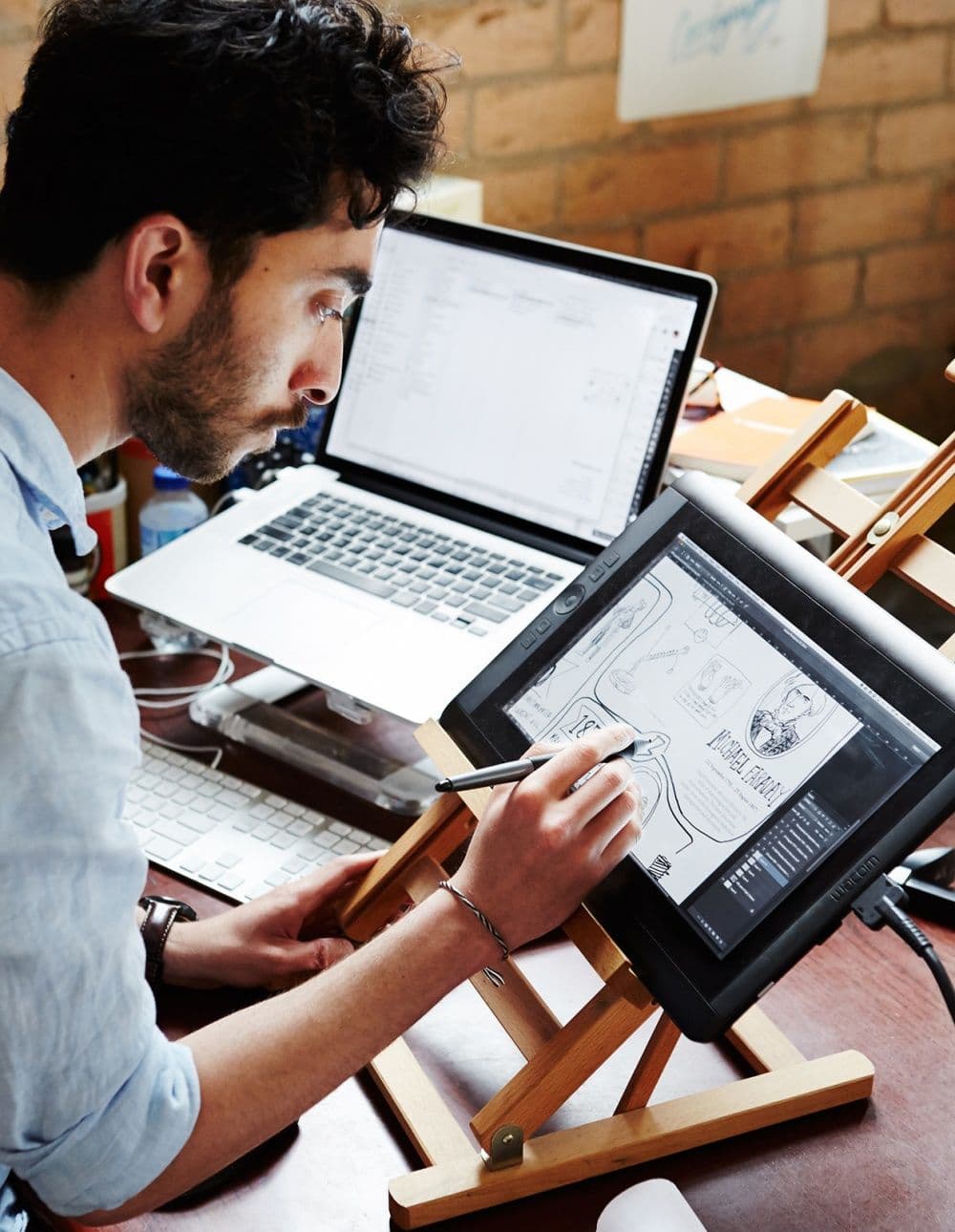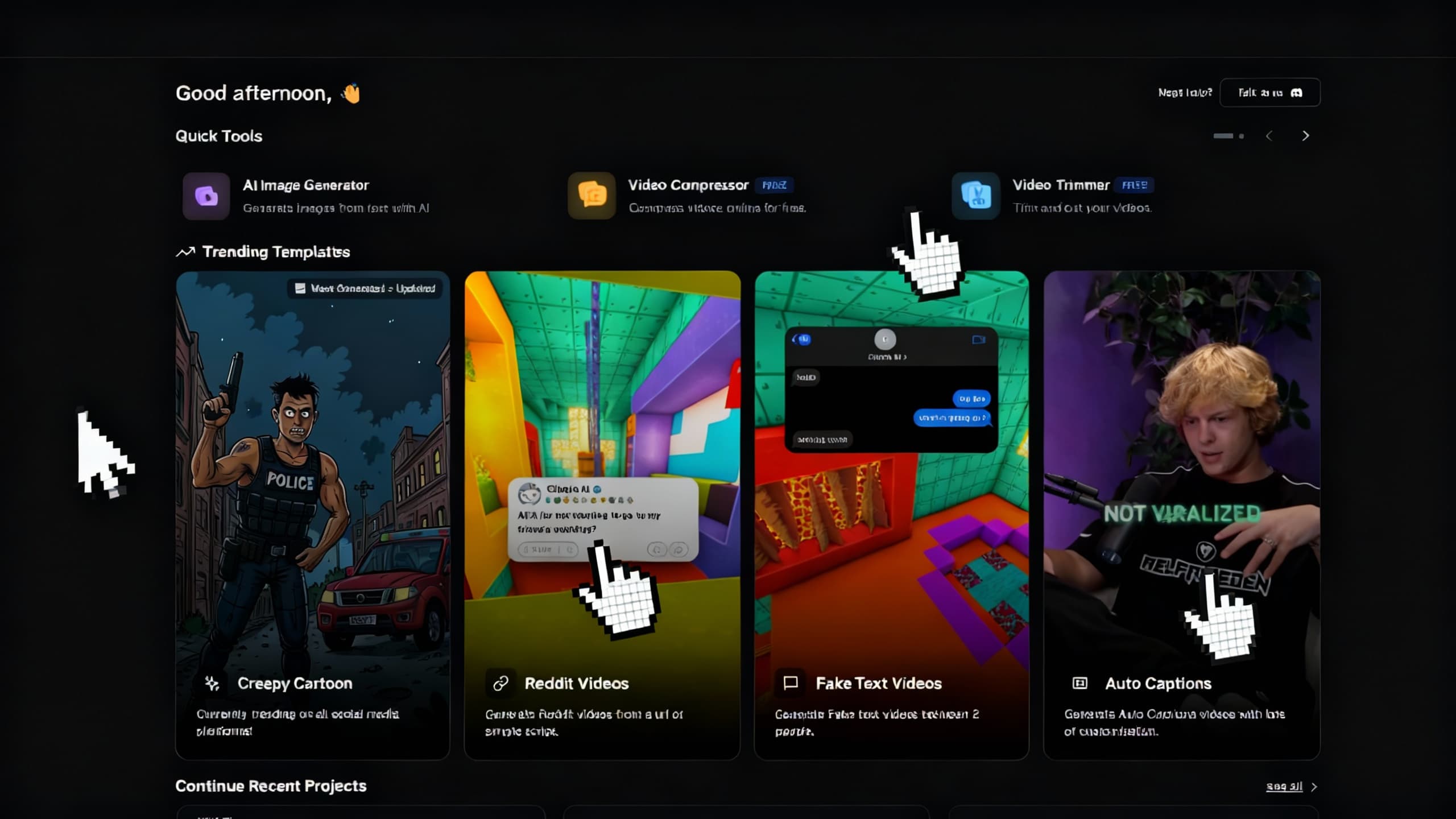Veo 3 & The Future of AI Video: What It Means for Faceless Creators
Discover how Veo 3 is shaping the future of AI video in 2025. Learn its unique features, limitations vs. Clippie AI, and how faceless creators can leverage both tools for massive growth.

Addressing the Main Topic
AI video creation has officially crossed the threshold from futuristic hype to everyday reality in 2025. With the release of Veo 3, Google has stepped into the next frontier of text-to-video generation, providing creators with a powerful tool that can transform simple written prompts into cinematic-quality visuals. This innovation is particularly significant for faceless creators, the YouTubers, TikTokers, and digital marketers who prefer to stay off camera yet still want to produce engaging, high-quality content. Veo 3 empowers them to create immersive videos without relying on actors, expensive equipment, or traditional video shoots. However, as revolutionary as Veo 3 is, it doesn’t exist in isolation. Other specialized platforms, like Clippie AI, are also shaping the future of content creation by focusing specifically on short-form, social-first formats. This raises important questions: How do Veo 3 and Clippie AI compare? Where do they complement each other? And what do these advances mean for the broader creator economy? These are the questions this blog will explore in depth.
Why This Topic Is Relevant Today
The rise of faceless content creation has been one of the most dramatic shifts in digital media over the past two years. In 2023 and 2024, entire channels on TikTok, YouTube Shorts, and Instagram Reels exploded in popularity, run by creators who never once appeared on camera. Instead, they built massive audiences using a combination of stock footage, AI-generated voiceovers, and caption-based storytelling. This approach democratized content creation, proving that you didn’t need to be charismatic on camera to succeed in the creator economy.
Fast forward to 2025, and AI video tools like Veo 3 are accelerating this trend even further. Instead of spending countless hours sourcing stock clips, editing transitions, or syncing captions, creators can now generate entire video sequences from a single text prompt. The friction that once slowed down production is rapidly disappearing. The release of Veo 3 is more than just another tech announcement, it represents a seismic shift in how digital content is created, scaled, and monetized. The AI video revolution is not something that’s coming down the road, it has already arrived, and those who understand how to leverage it will have a serious competitive advantage.
Clear Definition of the Topic
At its core, Veo 3 is Google’s third-generation text-to-video AI model, a system that enables users to generate video clips directly from lines of text, much like ChatGPT generates paragraphs of writing. A prompt such as “a cinematic shot of a rainy Tokyo street at night, filled with glowing neon lights” can now result in a polished, 30-second high-resolution video. This capability is what sets Veo 3 apart from traditional editing software: it eliminates the need for raw footage altogether, creating video content on demand from imagination alone.
For faceless creators, this technology has immediate and obvious advantages. There is no longer a need for cameras, actors, or physical locations. There is no dependence on repetitive stock footage. And there is no time wasted on tedious manual editing. Instead, creators can move straight from idea to execution in a matter of minutes, producing both short-form and long-form videos with ease.
On the other side of the spectrum is Clippie AI, a tool that focuses less on cinematic creation and more on repurposing text into short-form, social-first video content. Clippie specializes in converting tweets, scripts, or written insights into ready-to-post TikToks, Reels, or YouTube Shorts, complete with captions, hooks, and viral-friendly formatting. The key distinction here is that Veo 3 is a broad, cinematic video engine, while Clippie AI is a laser-focused social video accelerator. Both are powerful but they serve different purposes in the creator’s toolkit.
Detailed Overview Paragraph
In this blog, we’ll explore how Veo 3 is redefining what’s possible in AI video creation and why it matters so much for the faceless creator economy. We’ll take a close look at the unique features that make Veo 3 stand out, while also examining its limitations when compared to Clippie AI’s social-first approach. From there, we’ll explore the specific opportunities Veo 3 opens up for TikTok and YouTube creators, share predictions on where AI video is headed in 2025, and lay out a practical strategy for combining both Veo 3 and Clippie AI to maximize growth. By the time you finish reading, you’ll have a clear roadmap for leveraging AI video tools to stay ahead of the curve in one of the fastest-moving industries on the planet.
Table of Contents
What makes Veo 3 unique (text-to-video)
Limitations compared to Clippie AI
Opportunities for faceless TikTok/YouTube creators
Predictions for AI video in 2025
How to combine both tools for maximum growth
1. What Makes Veo 3 Unique (Text-to-Video)
Veo 3 is a paradigm shift in how we think about video production. Earlier AI video models were often disappointing, producing blurry, distorted, or overly abstract clips. Veo 3, however, delivers high-quality, cinematic visuals with resolutions up to 1080p and even 4K in some cases. The model has been trained on an enormous dataset, allowing it to understand natural motion, perspective, and continuity in ways that older systems simply could not.
One of its defining strengths is context awareness. Unlike first-generation models that struggled to maintain consistency across frames, Veo 3 can generate seamless sequences. If you ask it for a continuous drone shot over a mountain range, the output won’t look like a stitched collage of mismatched scenes. Instead, it produces fluid, realistic motion that feels like it was captured on a high-end camera.
Another advantage is style control. Creators can guide the AI to produce visuals in a wide range of aesthetics, from anime-inspired frames to photorealistic landscapes. This flexibility means that faceless creators can build distinctive brands around unique styles without hiring animators or VFX artists.
Finally, Veo 3 excels at natural motion. Unlike older AI systems where people walked awkwardly or objects seemed to float unnaturally, Veo 3 produces realistic human and environmental movements. This makes it not just a tool for abstract visuals, but a genuine storytelling engine.
For example, a faceless finance creator could type the prompt: “a cinematic animation of dollar bills flying dramatically into a vault, with golden light flooding the scene.” In minutes, they’d have a polished, cinematic sequence ready to upload, without touching a camera or editing software.
2. Limitations Compared to Clippie AI
For all its strengths, Veo 3 isn’t a perfect solution, especially when compared to tools designed with social-first creators in mind. The most significant limitation is that Veo 3 is not optimized for virality on short-form platforms. While it can generate beautiful cinematic clips, it doesn’t automatically structure them around the elements that drive TikTok or YouTube Shorts engagement: punchy hooks, scrolling captions, trending sounds, or built-in memes.
Another drawback is speed. Generating a high-quality 30-second Veo 3 video can take several minutes, whereas Clippie AI can turn a text input into a finished, social-ready short in under sixty seconds. This difference matters if you’re a creator trying to scale content rapidly.
There’s also the issue of native social features. Clippie AI is built with TikTok and YouTube creators in mind, so it automatically formats videos vertically, integrates captions, and even suggests hashtags or AI-generated voiceovers. Veo 3, by contrast, outputs cinematic content that still requires manual adjustments if you want to adapt it to social media.
Finally, Veo 3 comes with a learning curve. While its text-to-video engine is powerful, getting consistent results requires practice and experimentation with prompts. Clippie AI, on the other hand, has a streamlined workflow designed for ease of use.
In short, Veo 3 is like the canvas that can generate any kind of scene, while Clippie AI is the paintbrush built specifically for viral, platform-native growth.
3. Opportunities for Faceless TikTok/YouTube Creators
The real beneficiaries of these tools are faceless creators, and the opportunities for them in 2025 are enormous. Veo 3 allows them to scale faster than ever before. Instead of being limited by the time it takes to record or edit footage, creators can now produce ten or more videos per day without ever picking up a camera.
The potential niches are practically endless. A horror storytelling channel can generate chilling visuals to match its scripts, a motivational TikTok creator can design dramatic scenes to accompany voiceovers, and an educational YouTuber can illustrate complex concepts with cinematic animations, all without relying on generic stock footage.
Another major opportunity lies in global accessibility. With built-in AI subtitles and voiceover integrations, faceless creators can reach audiences across languages and cultures, expanding their reach beyond local communities.
Perhaps most importantly, these tools make content creation cost-efficient. There is no need for expensive studios, professional lighting, or editing software. The only investment is the AI tools themselves, which drastically lowers barriers to entry.
Take, for instance, a real-world case study: a faceless YouTube travel channel that used Veo 3 to generate “cinematic drone footage” of exotic destinations they had never physically visited. By combining these visuals with AI-generated narration and background music, the creator was able to grow their channel to half a million subscribers in just six months, all while remaining completely off camera.
FAQs (SEO-Rich, Long-Tail)
Q1: Is Veo 3 free to use for creators? Currently, Veo 3 operates on a credit-based system. Some limited free usage is available, but frequent creators will likely need a subscription.
Q2: Can I use Veo 3 videos for monetized YouTube content? Yes, as long as the videos are original and comply with YouTube’s policies. AI-generated content is monetizable if it offers unique value.
Q3: What’s the main difference between Veo 3 and Clippie AI? Veo 3 focuses on cinematic text-to-video generation, while Clippie AI specializes in social-first short-form content optimized for virality.
Q4: Will AI replace human video editors in 2025? Not entirely. While AI automates much of the process, human creativity in storytelling, branding, and strategy remains irreplaceable.
Q5: How can beginners start using AI video tools effectively? Start small: pick one niche, generate 5–10 videos weekly using Veo 3, and repurpose them in Clippie AI for TikTok/YouTube Shorts. Analyze performance, then scale.
Conclusion with Strong CTA
AI video is no longer a “future trend”, it’s the present. Veo 3 has made cinematic text-to-video creation possible, while Clippie AI continues to dominate short-form content optimization. For faceless creators, this is the golden era. By combining these tools, you can scale faster, reach wider audiences, and grow your brand without ever showing your face.
👉 Ready to start? Experiment with Veo 3 for visuals, then supercharge your content with Clippie AI. The faceless creator economy is just beginning, and the smartest move is to get ahead while the competition is still catching up.
CLICK ME TO START CREATING CONTENT WITH CLIPPIE AI
Read more

The Ultimate Beginner’s Guide to Clippie AI (2025): Plans, Credits, Top-Ups, and How It All Works
Learn all about Clippie AI in 2025, including subscription plans, AI credits, and top ups, to help you create faceless videos quickly and grow your content effortlessly.

Building a Viral Workflow with Clippie AI (2025 Edition)
Learn how to build a viral, automated content workflow using Clippie AI. Discover daily systems, templates, and monetization workflows that help creators scale across TikTok, YouTube, and Instagram.

Recap: The Best AI Video Creation Trends from 2025 (And What's Next for 2026)
Complete recap of 2025's biggest AI video creation trends and expert predictions for 2026. Discover how AI tools like Clippie transformed video workflows forever.